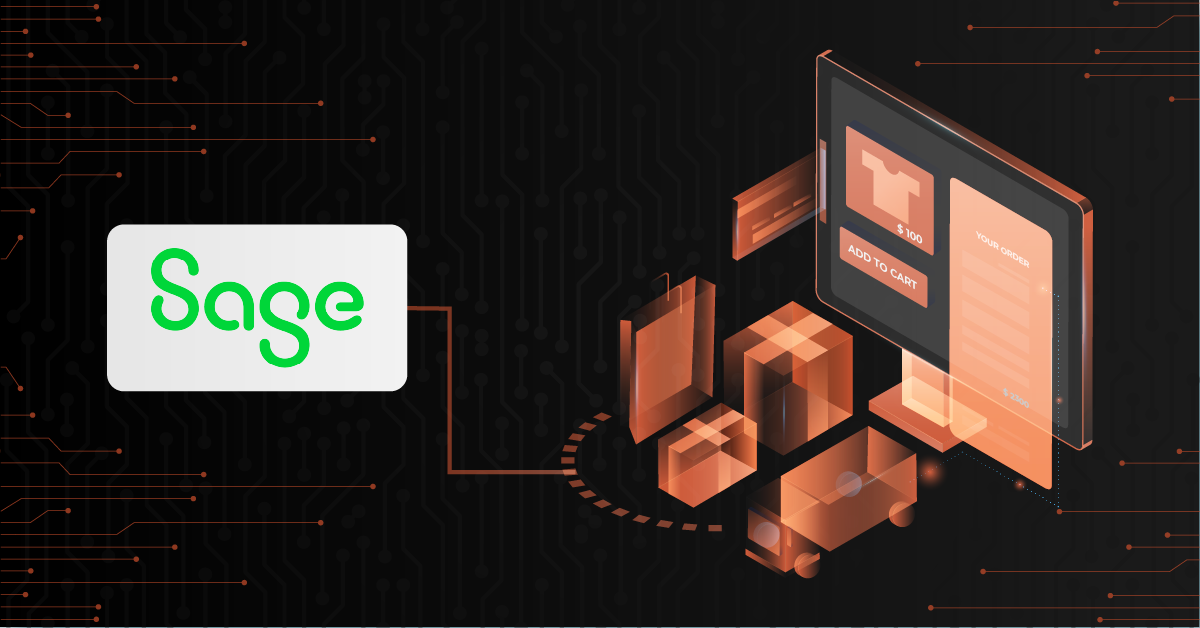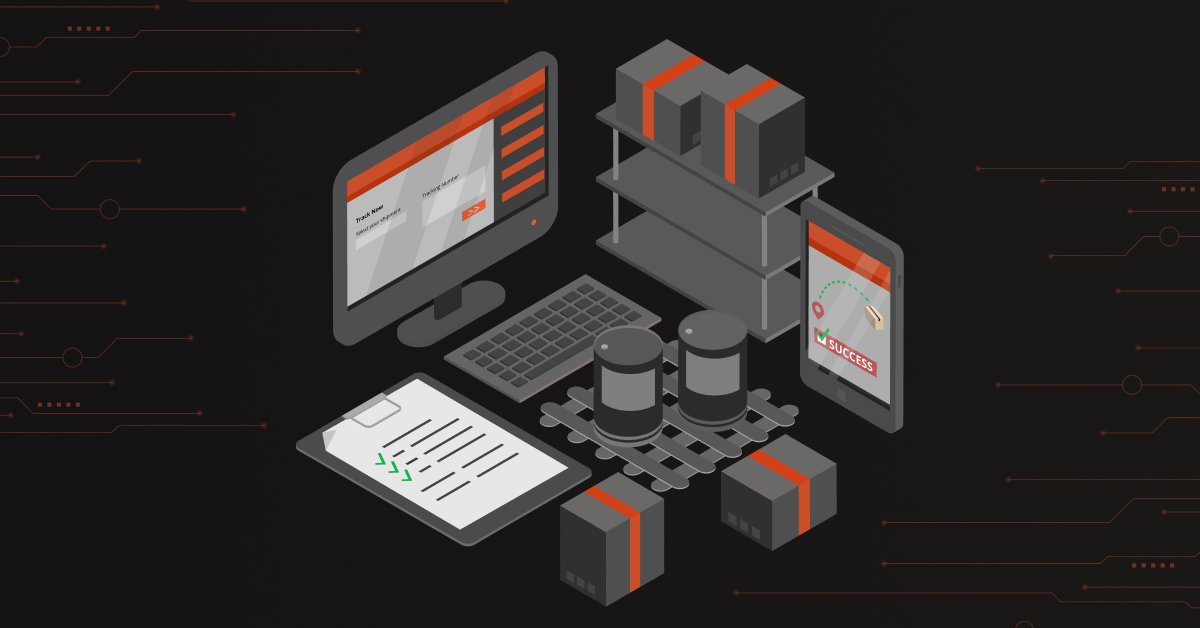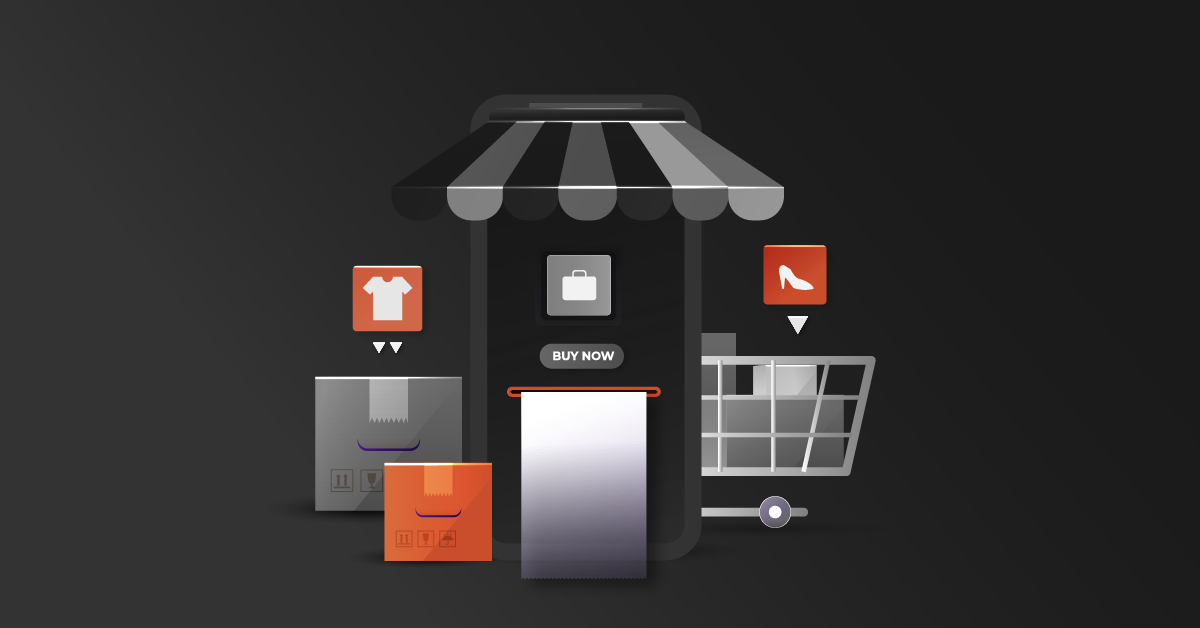Sage eCommerce Integration seamlessly connects a company’s online business platform with its Sage Enterprise Resource Planning (ERP) system.
This integration ensures a smooth, real-time exchange of crucial data between the eCommerce storefront and the backend Sage ERP system, enabling a bidirectional flow of information.
This streamlined process eliminates the need for duplicate data entry, as information entered into one system is automatically reflected in the other, providing a unified view of operations.
Contents
How to Choose the Right Approach for Sage eCommerce Integration
Choosing the right approach for integrating Sage ERP with an eCommerce platform is a critical decision that can significantly impact business operations. Here are key considerations when evaluating integration providers:
API Availability
Check if the systems you’re integrating have open and well-documented APIs. Open APIs simplify the connectivity process and offer more flexibility. On-premise software may pose limitations, so assess how this affects your integration.
Data Volume
Evaluate the volume of data that needs synchronization. Whether it’s a few orders or an extensive product catalog with thousands of items, the integration solution should efficiently handle the scale of your database.
Customer Type
Consider your customer type (B2C, B2B, B2G). Different customer types may introduce varying complexities to the integration process. B2B sellers, for example, often have more intricate requirements.
Customizations
Identify any proprietary (unique) requirements your business has that might necessitate custom solutions. Ensure that the chosen integration solution can accommodate these specific needs.
Technical Resources
Assess the availability of internal or external technical resources to support the integration project. If you lack in-house expertise, you may need to rely more on the integration provider. Consider if you have an IT person, a Sage implementer, or a web agency to assist.
Budget
Define the budget you can allocate to the integration project. Different solutions may come with varying costs, so understanding your financial constraints upfront is essential.
Vendor Experience
Look for a software vendor with experience in integrating your specific systems. Experienced vendors are likely familiar with potential challenges, system limitations, and common problems that may arise during integration. This expertise can contribute to a smoother project.
Unique Requirements
Recognize and address any unique requirements your business may have. No two businesses are identical, and integration solutions should be tailored to meet your specific needs. Consider investing in an ecommerce solution that aligns with your requirements from the outset to avoid higher operational costs.
Integration projects have a substantial impact on business efficiency and customer interactions. By carefully considering these factors and choosing a solution that aligns with your business rules, you can save time, money, and enhance overall operational effectiveness.
Also read: Understanding Sage ERP Integration
Why Sage eCommerce Integration is Crucial
Sage eCommerce Integration is indispensable for businesses due to several key challenges:
Managing Compliance Issues
- Challenge: Dealing with regulations from different countries and jurisdictions.
- Solution: Integration streamlines financial reporting, HIPAA compliance, data security, and product traceability, preventing compliance nightmares.
Supporting Strategic Decision-Making
- Challenge: Mistakes in estimates or supplier timetables impacting production dates.
- Solution: Real-time data and integrated systems prevent errors, offering custom dashboards for accurate comparisons and forecasts every year.
Administering Across Multiple Sales and Marketing Platforms
- Challenge: Complexity in managing sales across various platforms.
- Solution: Automated processes in real-time, like Clarity Connect™, simplify tasks such as upgrading inventory, calculating commissions, and ensuring accurate profit figures.
Strengthening Platform Security
- Challenge: Balancing customer access with security concerns.
- Solution: Integration of Sage ERP into the API layer establishes a secure boundary, addressing security issues with advanced user permissions and a robust integration platform.
Creating Custom Reports and Focused Management Dashboards
- Challenge: Managing complex ordering processes.
- Solution: Custom dashboards and reports for customers, resellers, and partners, enhancing transparency and real-time insights into order history, invoices, and supply chains.
Automating Customer Service
- Challenge: Meeting customer demands for 24/7 online self-service.
- Solution: Automated options, like those in Clarity eCommerce Framework™, offer global support, language translation, and consolidated orders, ensuring outstanding user experiences.
Fostering 24/7 Accessibility on All Computing Devices
- Challenge: Adapting to the rise of mobile commerce.
- Solution: Mobile-responsive dashboards for Android, iOS, and Windows systems provide 24/7 access to critical information, aligning with the mobile trend in eCommerce.
Streamlining Order Placement and Fulfillment
- Challenge: Simplifying the ordering process for customers.
- Solution: Automated recommendations based on client preferences, real-time inventory updates, and streamlined order processing led to increased customer satisfaction and conversions.
Enabling Customized Quotes and Product Design
- Challenge: Allowing customers to customize products.
- Solution: Integration of eCommerce and business applications enables easy adaptation of products, personalized quotes, and streamlined communication with production and procurement departments.
Popular Sage – eCommerce Integrations
While there are several popular Sage eCommerce integrations, we’re highlighting the top four to provide you with a clearer understanding of how this process operates.
1. BigCommerce – Sage Integration
Seamlessly connecting BigCommerce with Sage ERP software, this integration ensures real-time synchronization of product details, online orders, and customer data. BigCommerce’s robust ecommerce capabilities integrate with Sage’s ERP functionalities.
Features
Comprehensive Order Processing: Enables efficient order management with real-time updates between platforms.
Unified Inventory Management: Maintains accurate inventory levels across both systems for streamlined operations.
Enhanced Scalability: Supports businesses of varying sizes, providing flexibility as operations grow.
2. WooCommerce – Sage Integration
Integrating WooCommerce with Sage ERP system, aligns the popular WordPress-based ecommerce platform with comprehensive ERP functionalities. It facilitates the seamless exchange of data for enhanced business processes.
Features
WordPress Integration: Leverages the flexibility and content management capabilities of WordPress for a dynamic online presence.
Open-Source Customization: Allows businesses to tailor the integration to their unique requirements using WooCommerce’s open-source nature.
Extensive Plugin Ecosystem: Access to a wide range of plugins for additional functionalities and customization options.
3. Adobe Commerce – Sage Integration
Linking Adobe Commerce (Magento) with Sage ERP, this integration optimizes the management of online stores and backend operations. It offers a robust solution for businesses seeking a scalable and feature-rich ecommerce platform integrated with Sage’s ERP capabilities.
Features
Advanced ecommerce Capabilities: Leverages Magento’s feature-rich platform for flexible product management and marketing tools.
Multi-Channel Selling: Facilitates selling across various channels with centralized control and real-time synchronization.
Extensive Marketplace Support: Access to Magento’s marketplace for additional extensions and integrations.
4. Shopify – Sage Integration
Connecting Shopify with Sage ERP or Shopify Sage 100 integration streamlines the flow of information between the ecommerce platform and enterprise resource planning, enhancing overall business efficiency. It provides a user-friendly interface for managing online sales.
Features
User-Friendly Interface: Shopify’s intuitive interface makes it easy for businesses to manage their online stores.
Mobile Responsiveness: Ensures a seamless experience for customers placing orders on various devices.
App Ecosystem: Access to a wide range of apps for additional functionalities and customization options.
Each Sage eCommerce integration option comes with its unique features, catering to diverse business needs. The choice depends on factors such as business size, scalability requirements, and the specific features that align with the goals of the business.
Also read: Salesforce Sage Integration: Getting Started for Distributors [2023]
Step-by-Step Guide to Sage eCommerce Integration
These are the simple steps that you must follow to integrate your ecommerce store with Sage.
1. Create an Account on Sage Developer Portal
- Navigate to the Sage Developer Portal and sign up for an account.
- Complete the registration process and verify your email address.
- Businesses with an on-premises ERP system have the flexibility of custom APIs tailored to specific needs and requirements. In contrast, for those utilizing a cloud ERP, the platform efficiently retrieves necessary details directly from the service provider, streamlining the integration process.
2. Choose and Install an Integration App for your eCommerce Platform
- Visit the App Store of your eCommerce platform and search for a Sage Integration app.
- Choose a reputable app that suits your business requirements and install it on your eCommerce platform.
3. Connect your eCommerce Platform to Sage
- After installing the Sage Integration app, access its settings within your eCommerce platform.
- Enter the credentials provided by Sage API into the app to establish a secure connection.
- Specify the types of data you want to synchronize between your eCommerce platform and Sage.
4. Configure Integration Settings
- Once the connection is established, configure integration settings to ensure seamless data synchronization.
- Set up product mapping, define how orders should be synchronized, and configure payment processing preferences.
- Customize other relevant settings based on your business needs.
5. Test the Integration
- Before fully implementing the integration, perform thorough testing to ensure everything works as expected.
- Place a test order on your eCommerce platform and verify that the data is accurately synced to Sage.
- Check for any discrepancies and address them accordingly.
6. Monitor and Optimize
- Regularly monitor the integration to identify and resolve any issues that may arise.
- Optimize the integration settings based on real-world usage and feedback.
- Stay updated with any new features or updates from both Sage and your eCommerce platform to maintain compatibility.
The Top Choice for Distributors – DCKAP Integrator
DCKAP Integrator iPaaS presents a robust solution for companies seeking seamless integration between Sage ERP and various business applications. With its pre-built connectors, the integration process becomes swift and efficient.
Why Choose DCKAP Integrator for Sage eCommerce Integration:
Pre-configured Packages for Effortless Setup: DCKAP Integrator offers a pre-configured package that encompasses essential data elements. This streamlines the setup process, reducing the complexity of integration and minimizing the effort required for configuration.
Security and GDPR Compliance: The platform employs encrypted transactions and SSL certifications, ensuring the highest level of data security. DCKAP Integrator’s GDPR compliance technology adds an extra layer of protection, safeguarding your data throughout the integration process.
Rapid Data Sharing for Enhanced Efficiency: DCKAP Integrator’s integration platform facilitates significantly faster data sharing. By eliminating manual data entry, businesses can enhance customer relationship management and operational efficiency, leading to quicker order processing and reduced chances of errors.
Bi-directional Data Sync Assurance: With DCKAP Integrator, you can be confident that your commerce network is seamlessly connected, enabling bi-directional data synchronization. This ensures that your data remains up to date across both your eCommerce store and Sage ERP.
User-Friendly Interface with Drag-and-Drop Functionality: DCKAP Integrator boasts a user-friendly interface with drag-and-drop functionality. This feature simplifies the configuration process, making it accessible even for users with limited technical expertise. The platform’s best-in-class UI and UX offers a competitive advantage.
Efficiency and Success Boost for Distributors: Integration with DCKAP Integrator removes the monotony of manual order entry and sharing, leading to improved data accuracy. The consolidation of customer data, including contract details and purchasing behaviors, enhances distributor efficiency. Real-time visibility into inventory, warehouse, and supply chain operations further contributes to overall success.
Financial Data Synchronization and Upselling Opportunities: DCKAP Integrator ensures synchronization of financial data, covering revenue, expenses, billing, and more. Additionally, the platform goes beyond basic integration by providing automatic recommendations to boost upselling and cross-selling. This strategic approach adds value to the integration, contributing to revenue growth opportunities.
Conclusion
From simplifying setup with pre-configured packages to ensuring data security and providing tools for enhanced efficiency, DCKAP Integrator addresses the key challenges associated with integration.
If you haven’t integrated an eCommerce store with Sage yet, now is the opportune time. Contact DCKAP for expert assistance and request a demo to witness how SaaS-based connectors facilitate bi-directional data sync between your eCommerce store and Sage ERP.
FAQS
What is eCommerce Integration?
eCommerce integration involves connecting an online store with other business systems or third-party apps to streamline data flow and automation. It has the ability to ensure seamless communication between different business systems, such as inventory management, order processing, and customer relationship management.
What makes an eCommerce platform a market leader?
Market-leading eCommerce platforms stand out for their comprehensive features, user-friendly interfaces, scalability, and extensive app ecosystems. They cater to businesses of all sizes and offer benefits such as easy customization, seamless integration, and robust support. For eg, Shopify, BigCommerce, and WooCommerce.
What are eCommerce marketplaces?
eCommerce marketplaces are online platforms where multiple sellers can list and sell their products on the storefronts. Examples include Amazon, eBay, and Etsy. Selling on marketplaces provides businesses with access to a large customer base, built-in traffic, and established trust. It can also serve as a testing ground for products before investing in a standalone eCommerce website.
What is eCommerce software, and what does it include?
eCommerce software is a platform or application designed to facilitate online selling. Key features include Product catalog management, Shopping cart functionality, Secure payment processing, Order fulfillment and management, and Mobile responsiveness.
What are some key Sage products and their use cases?
1. Sage Intacct:
Use Case: An advanced financial management platform designed for professionals with a growing business.
2. Sage X3:
Use Case: Finance and operational management that’s faster and more flexible than traditional ERP (Enterprise Resource Planning).
3. Sage 50 Accounting:
Use Case: Sage accounting software connected to the cloud.
Is expertise required to integrate Sage 100 with eCommerce platforms?
While basic knowledge of both Sage 100 and eCommerce platforms is beneficial, Sage 100 eCommerce Integration can be facilitated without deep technical expertise. Many integration solutions offer user-friendly interfaces, and some may provide guidance or support during the integration process.




